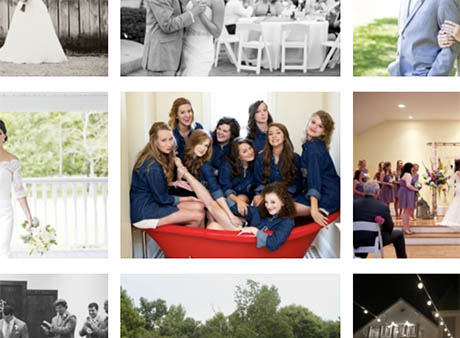I hate wedding photos.
It’s not that I hate marriage or the people in the pictures. I just don’t see the glamour or fantasy or happiness that so many people associate with those photos. Instead, I associate them with shallow fantasy and excess spending by people looking — consciously or not — to paint a false picture for the world.
I’m often asked why I don’t make money on weekends by taking wedding photos, but I could never be a wedding photographer unless I could take the photos the clients want and tell myself I’m doing parody instead. My over-the-top satirical take on cliched “life event” photos would be exactly what many others truly want and find meaningful.
I’m really big on symbolism and finding meaning in metaphor. I find that wedding photos tend to be shallow expressions of fantasy to cover up the reality of relationships that are shallow and unhappy. Those photos let people lie to others about their marriages for years. More importantly, those photos let people lie to themselves.
My friend Keith Hall shared a story Sunday that neatly illustrates the unintended irony of the American obsession with the wedding facade, which I see as representative of the marriage facade.
In the Birmingham suburb of Leeds, there’s a wedding venue called the Sonnet House. It’s a nice old country home that’s used for weddings and other events. I’ve attended a couple of weddings there and it’s a fine venue for people who like that sort of show. I can honestly recommend it.
In one of the bathrooms of the house is a large red bathtub that has become popular for wedding photos. Keith posted an example of one of them with his story on Facebook and the venue has another example among the gallery of marketing photos on its site, above. But I wonder how many of those brides know the story of that bathtub. Here’s Keith to tell the story.
“I’ve been pretty interested here lately in all the brides who seem to be fascinated by the red bathtub at the Sonnet House in Leeds,” Keith wrote. “Before this house was a wedding venue it was the home of my great friend James Stanford. James is the one who was constantly building on it and transforming it from an old farmhouse to the Victorian look it has today.
“He purchased this bathtub by mail order in about 1993 and when it was delivered I helped him carry it into the house. On April 22, 1995, James had dinner at Capt. D’s in Leeds and went back home. He suffered a heart attack in this bathroom and fell dead into this tub where he laid until he was found the next day. I’m pretty sure he would be amused at the latest fascination with his tub!”
Keith obviously didn’t intend his story to be a commentary on American weddings and marriages, but I found the symbolism too fascinating to ignore.
The brides who have their pictures taken there want to present a fantasy to the world of what they are and what their relationships are. The underlying reality of that fantasy is that it was where a human being died.
Those who want to project the fantasy don’t want to look too deeply beneath the surface for what might lie underneath their symbols. The same is true for many of our marriages — maybe most of them.
A wedding is about fantasy. I see it as the ultimate self-satirizing event. I hate going to them because they feel fake to me. They feel like events at which even happy people are going through a rote script because it’s what is expected.
I wouldn’t be so bothered by this if I didn’t find so many marriages today empty and lifeless and loveless. Those marriages are the final resting places of the hopes and dreams of many well-meaning people who bought into a fantasy but had no interest in building the relationship to match the fantasy.
I believe in love and I believe in marriage, but I believe even more in honesty, emotional vulnerability and genuine partnership. The fantasy that men and women buy in our society most often leads to unhappiness.
Modern marriage is frequently just like that red bathtub — a place where people go to wait for their own death.

 If romantic love is mental illness, do many of us want to be cured?
If romantic love is mental illness, do many of us want to be cured? Rand Paul filibuster brings GOP rats out into the light for us all to see
Rand Paul filibuster brings GOP rats out into the light for us all to see Would you have been on a ship? Or back home complaining?
Would you have been on a ship? Or back home complaining?